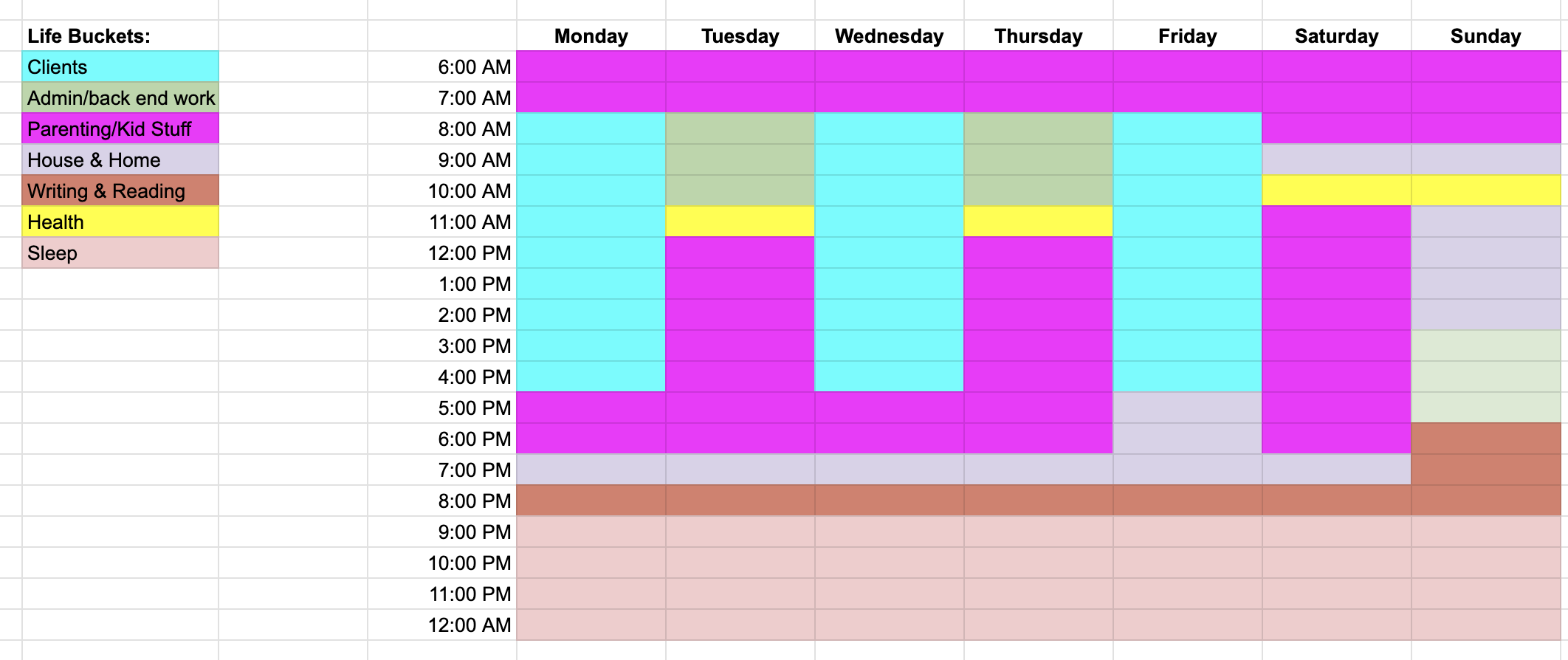Ever feel like your to-do list is more of a “wishful thinking” list? You start the day with grand intentions, only to be derailed by endless distractions, meetings that could’ve been emails, and tasks that somehow multiply like rabbits. Yeah, been there. That’s where time blocking and color coding come in—two simple yet game-changing strategies to not just get through your day, but to own it.
Imagine looking at your calendar and instantly knowing what your day holds, where your priorities lie, and—bonus—feeling a bit more in control of the chaos. With time blocking, you carve out specific chunks of time for each task, making multitasking a thing of the past. And when you throw in some color coding, your schedule goes from overwhelming to crystal clear, with each color acting like a friendly reminder of what’s next.
Ready to finally take the reins on your time? Let’s dive in.
Time Blocking
Think of it as the grown-up version of scheduling recess, except instead of swings and slides, you’re diving into deep work, meetings, or even some well-deserved downtime.
Here’s how it works: instead of tackling your to-do list in a random, frantic order, you dedicate specific blocks of time to each task or category of tasks.
For example, you might block off an hour in the morning for answering emails, two hours before lunch for focused work, and another block in the afternoon for meetings. The key here is to be intentional—no multitasking allowed. When you’re in a time block, that’s the only thing you’re focused on.
The beauty of time blocking is that it forces you to prioritize. By carving out time for the tasks that matter most, you’ll naturally start to push the less important stuff to the back burner—or maybe even off the stove entirely. It’s all about working smarter, not harder. And the best part? You’re the one in control, not your endless list of tasks.
So, if you’re tired of feeling like your day is running you instead of the other way around, time blocking might just be the game changer you’ve been looking for.

List Your Life Categories
I recommend less than 10 life buckets to begin. Like Warren Buffet said, if you have more than 3 priorities, you effectively have none.
For us regular, non-billionaire folk, I think it’s safe to have more than 3 priorities, but having too many priorities (or Life Buckets, in this case) but we’ll want to lean into a similar sentiment: having too many priorities means you have none. *gulp*
Categories can be further broken down into specifics, so you’ll want to be careful not to have too many to begin or your schedule will still be in control of you and not the other way around.
Life buckets or Life Categories can be things like:
- Work and business
- Family
- Friends/Social
- Health, Wellness, Fitness
- House and Home
- Financial Planning/Money Management
- Life Admin
- Hobbies + Fun
- Sleep
Each life bucket will break down into more specific tasks.
For example, say you’re a business owner and one of your life buckets is Admin. In the example schedule above, everywhere you’ve scheduled “Admin” would be reserved for specific admin tasks like:
- Update client programs
- Respond to emails
- Bookkeeping, accounting, and budgeting
- Social media and content planning
- Team meetings
You’re choosing the Big Rocks of life and plugging them into your calendar. What’s important for you to focus on now will change over time, so it’s important to revisit this on a regular basis (seasonally, quarterly) to adjust your days as needed.
Here’s a real example created with a client:
She’s a pelvic floor physical therapist, mom of 2, prioritizes health and fitness, values reading and writing, and needs time throughout the week to focus on work admin tasks plus house & home tasks.
She was feeling pulled in too many directions, making her feel overwhelmed & busy but never productive.
Instead of plugging in specific tasks for each hour of each week, we created a time-blocked, color coded schedule for her to use as a template & visual representation of how she’s spending her time.

One of the potential ‘down sides’ to a time block approach is you may notice transition fatigue. But if the alternative feels like burnout, it still may be worth exploring.
Another downside to time blocking is that it could encourage a rigid grip over your time and schedule. But, no one has ever “scheduled time” for a disaster, or heartache, or loss, or death, or change.
On a less dramatic note, though, you’ll want to keep rigidity at bay. Life is going to happen. You’ll do admin when you should be sleeping, you’ll be sleeping when you should be lifting, you’ll be running when you should be doing parenting or home things- that’s life.
It’s going to happen!
If it keeps happening, it may be time to revisit the schedule or even revisit whether or not you’re being honest with yourself about your expectations, priorities, realities, and goals.
More benefits to time blocking:
- You can view your priorities at a glance
- You can make time to plug-in things that have fallen to the wayside, like fitness, reading, or sleep
- You know what you need to be focused on at any given time which can reduce overwhelm and decision fatigue
Give it a shot. Happy planning!


